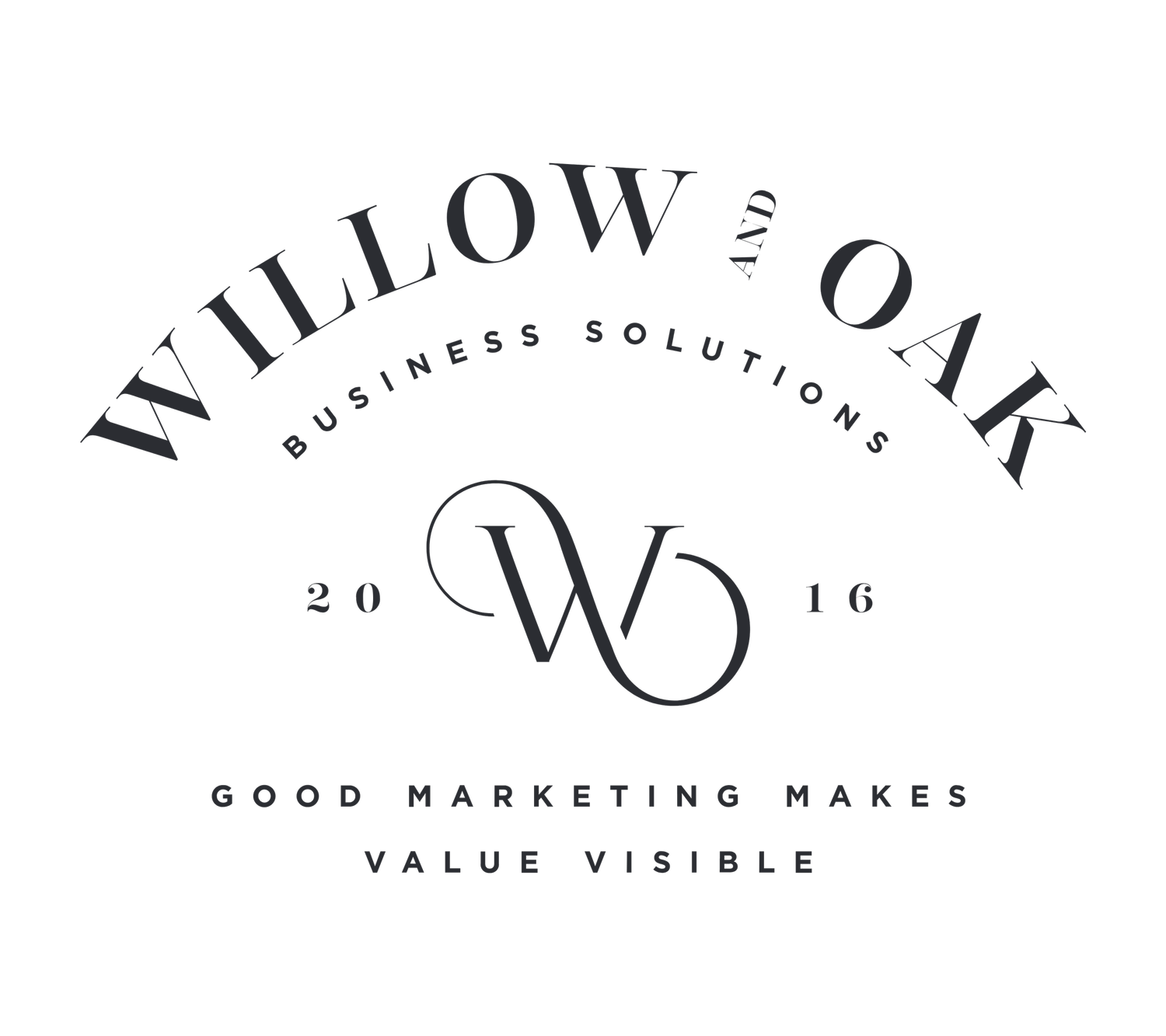The Case for Prioritizing Email Marketing in Your Strategy
You may be wondering what all the hype is about when it comes to email marketing. Why do marketers like me plant our flag on the email marketing mountain? Isn’t it spammy to send people emails? Don’t we get enough emails in a day? I’m going to tell ya what the hype is all about and hopefully debunk some myths and limiting beliefs around email marketing. Email marketing is one of the most profitable marketing activities at this point in time and I’m going to tell you why that’s so.
We’ll talk through the purpose of email marketing, why it matters, how to do it well, and how to know if it’s paying off, how to know if email marketing is right for your business, and a few quick tips on how to get started.
At this point in time, email marketing is one of the best marketing tactics. And why I say “best marketing tactics” what I really mean is that it delivers the biggest return. And by bigger return I mean more customer loyalty, a more engaged audience, not to mention $36 for every dollar spent according to a HubSpot report. That’s a bigger return than social media marketing, bigger than blogging, and more. I’ll share some statistics to back that up here in just a minute, but I really want to be clear about one thing: Understanding the purpose and expected deliverables of your marketing tactics are necessary.
The purpose of email marketing is to provide information, resources, and education to an audience who has actively and intentionally asked to receive it from your brand.
They’ve opted-in in some way. They’ve provided their email address as a form of payment for something in return. A secondary purpose of email marketing is to bring your brand to life. Think of your brand as if it has its own lifeblood. Email marketing is one way that we show that our brands are active, vitality-filled, and dynamic. It shows your audience that you’re interested in them, that you're interested in them learning and moving further along in their journey, and this matters. This is how we build trust with people, by teaching and inspiring and continuing to show up consistently. When people enjoy our content, they look forward to engaging with it. In my email I have a folder designated for a particular email newsletter that I get every few weeks. I absolutely love the insights in them and I enjoy looking back on them. I also forward them to people who I think would get something out of them because often times they’re just so-spot-on. Which leads me to my next topic… how to do email marketing well!
Good email marketing informs, educates, inspires, invites, includes, and ultimately helps people make better decisions.
That’s the purpose and doing it well means that you’re providing expertise on a regular, consistent basis. That can be weekly, monthly, every two weeks, whatever you can commit to sustaining is the right cadence. Your emails can have a template that you follow, so they're standardized every single time. They can showcase your creativity and have a different feel each time, while staying on brand of course. The way that we do email marketing well is by listening to what our audience needs from us, then addressing those pain points, objections, concerns, and questions directly. We should be doing this in all of our inbound marketing activities, but with email marketing you get a really expensive piece of real estate - right in their inbox. Give these folks the very best of what you’ve got.
Additionally, tell them what to do next. People enjoy not having to think through their next steps, so if you have an informative email newsletter, give them instructions on how to apply the material in their own life. Give strong calls to action, like "forward this on to someone in your network" or "email me directly", or even better "schedule your free consultation by clicking here". After you’ve provided all the value, making their next action easy, straightforward, relevant, and simple is what makes that email newsletter a profitable one.
One of the biggest compliments I’ve ever received was from a small business owner who told me that she saves my emails for when she’s feeling uninspired, not sure how to move forward or needs a pep talk.
That feedback tells me that the content I’m producing matters to her and that my expertise and the delivery system by which I’m sharing it is meeting a need.
So let’s talk about that: How do we know if our email marketing efforts are paying off? A few ways. Direct feedback is always a key indicator, such as someone replying to your newsletter, or mentions your newsletter when they see you. Another way is to monitor if your email is being forwarded on to others and some emails service providers offer this insight. You may even hear from the person who received the forwarded email, which is always a great indicator that your messaging is resonating.
Email Marketing Open Rates
Other key performance indicators to pay attention to are statistics like open rates which tells us that of the folks who received the email (which is informed by the delivery rate) how many people actually opened the email. One quick note on open rates: You can look up the average open rate of YOUR specific industry here.
Percentages vary depending on the industry, so just keep in mind that a generic metric like 30 or 40% may not be entirely accurate for your business. Also, know that if your open rates are on the low side, there are plenty of ways to get that percentage higher. Focusing on creating a more enticing subject line and or segmenting your list into categories of likeminded behaviors are two good ways to get your open rate up. But for now, just remember that open rate is a key indicator of the success of your overall email marketing strategy.
Email Marketing Click Through Rates
Another way to know if your email marketing is fulfilling it’s purpose is to look at your click through rates. As I mentioned earlier, having calls to actions, telling your audience what they should do with the material you’ve provided or how to apply it is part of your job as their educator. Your email service provider gives you data on who has clicked on the links and buttons in your newsletter. You can gauge people’s interest and behavior this way.
Ultimately you want people to take action with your email newsletter. You want them to click on a link that will take them to your website, owned media, or schedule a discovery call with you. By incentivizing that and getting intentional about driving traffic to where you want people to go will make all the difference.
So we’ve discussed the purpose of email marketing as well as some thoughts on how to do email marketing well and how to know if it’s doing what we want it to do. So now let me share some reasons why I think email marketing deserves a prominent place in your marketing strategy.
1. I’ve linked some places where you can read up on statistics and rather than reading them to you here are a few noteworthy ones (and please click on those links to get more data to support the email marketing hype)
According to OptinMonster, a 2020 metric indicated that 99% of email users check their inbox every day, with some checking 20 times a day. Of those people, 58% of consumers check their email first thing in the morning.
Additionally Bluecore reported that 74% of Baby Boomers think email is the most personal channel to receive communications from brands, followed by 72% of Gen X, 64% of Millennials, and 60% of Gen Z. This is a 2021 statistic by the way.
2. In addition to the statistics, email marketing provides a direct impact to a warm audience. There isn’t a feeding frenzy of distraction or competition or attention grabbing like there is on social media. It’s one email that they can focus on when they’re in the frame of mind to do so.
3. Additionally, the email list belongs to you. Your social media followers do not. This is a common reason why marketers like me promote building your list. Women like Amy Porterfield and Jenna Kutcher are examples of marketers who have paved the way for email marketing success by reminding us that social media followers are fickle and they belong to the platform. So if your social media platforms were to disappear tomorrow, would your entire audience disappear with it? Not if you’re focused on nurturing your email list.
4. Nearly half of the world's population is using email and it’s a far more robust, sophisticated, and personalized way of doing business.
So if email marketing just moved to your top marketing priority, woo hoo! That’s something to celebrate. My work here is done. Just kidding.
Here are a few ways you can get started with email marketing:
1. First things first, get yourself an email service provider. Personally I love Flodesk. Here's a link that gives you 50% off. It’s the most user-friendly email marketing platform I’ve ever used and I recommend it all the time. Not to mention, it’s my platform of choice for my email newsletters. It’s not free but it’s an annual fee and includes all the bells and whistles of other more popular email service providers like MailChimp and Constant Contact. Personally I just think it’s easier to use and offers more creative tools.
2. Next, you need a way for people to opt-in and become a member of your audience. The best way of doing this is to provide something of substantial value, something that solves a problem, something of interest, something they’d love to have in exchange for their email address. These are often called lead magnets or opt-ins and I've create a list of 16 lead magnets to help you think through what may work best for your business. Ultimately it comes down to what your ideal clients want to learn about and what medium to they want to get the material. The opt-in is a way of getting consent to continue sending them your branded materials.
3. Lastly, promote the opportunity for people to join your email list by adding an opt-in form to your website. I recommend doing this on every single page of your website, even if it’s in the footer. You can add a pop up as well, you can promote your lead magnet on social media, you can share it with the people who are in your network by emailing them directly.
Lastly, for those of you who are worried about being thought of as spammy or that people will unsubscribe, that’s your fear talking. It takes vulnerability to put yourself out there and share what you know. But remember that those people want to hear from you. They want you to help them make better decisions so that they can move forward in a way that’s right for them. They trust that you can be that guide to get them from where they are now to where they want to be. Email marketing is just one simple way of doing that.
Ok, we’ve covered a lot and if this is material that you’re interested in, I’d encourage you to subscribe to my email newsletter. It’s filled with marketing education and insights specifically for small business owners.
Schedule a free consultation to get customized advice on your marketing activities.
Thanks for being here,
Kelly Smith



